CS Lab Facilities
SYSTEM LAB
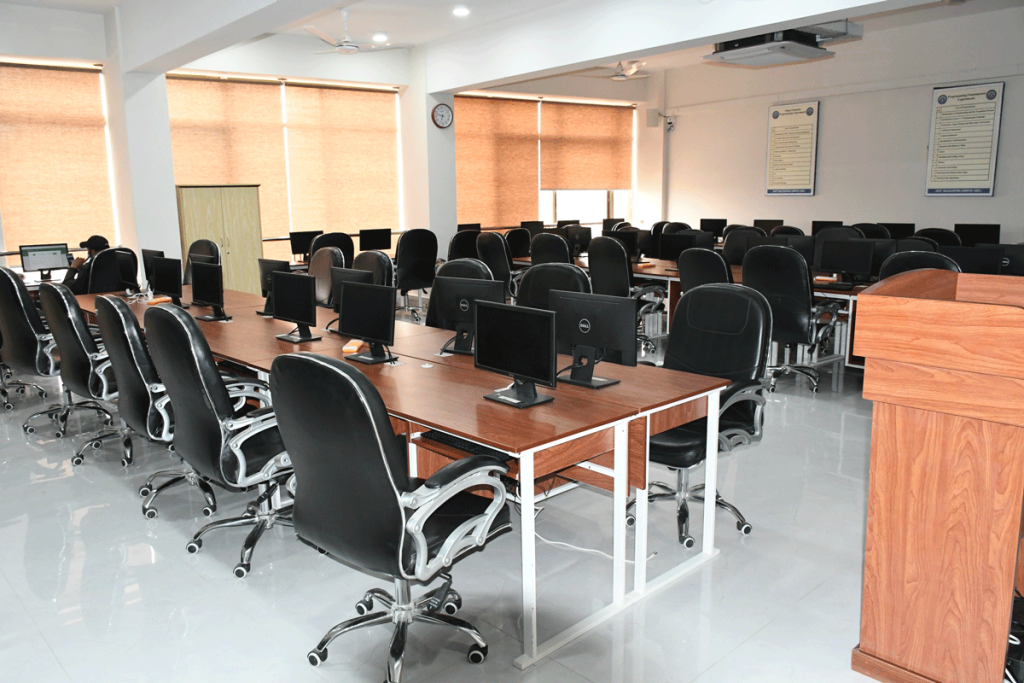
Lab Incharge
Safder Ali
44PC’s
Model Dell OptiPlex 7060.
Specs: Core i7 8th Gen, 16GB RAM, 512GB SSD, 1TB HDD, Built-in Wi-Fi & Wireless Sound Card.
06PC’s
Model Dell OptiPlex 7080.
Specs:
Processor and Chipset: Chipset Q470 / 10th Generation Intel ®
Core TM i7-10700,
Memory 16GB 2x8GB
“Hard disk Drive: 1x M.2 128GB Pcle NVMe SSD HDD
Software
- double-boot: [Windows 10 Pro + Ubuntu 20.04 LTS]
- Visual Studio Code 1.75-C/C++
- MATLAB 2022a
- Scratch
- NASM assembler 2.07
- Virtual Box 6.1
- Jupyter Notebook v6 5.4
- Python 3.11.0
- MS SQL Workbench 6.3 6.3
- Microsoft Office 2013
Purpose of the Lab
The Systems Lab, where the Operating System Lab, Numerical Analyses, and DSA Lab are conducted, provides a hands-on learning environment for students. In this lab, all PCs are dual-booted with Windows and Linux, allowing students to gain practical experience in working with different operating systems and software environments.
This setup enables students to explore and apply theoretical concepts learned in their coursework to real-world scenarios, enhancing their understanding of operating systems, numerical analysis techniques, and data structures and algorithms.
COMMUNICATION AND NETWORKING
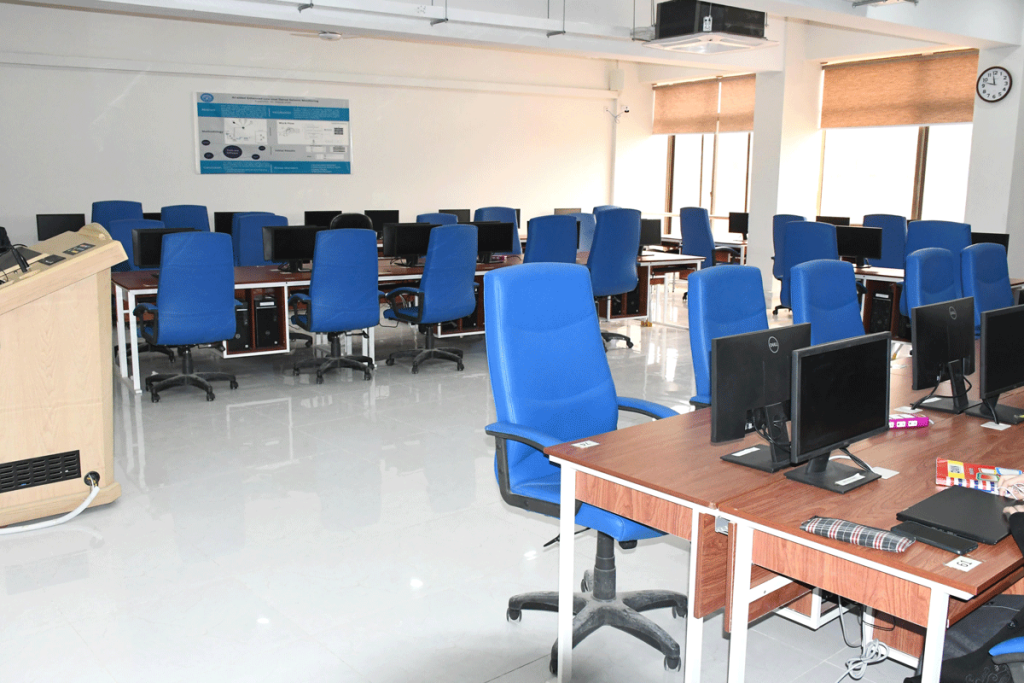
Lab Incharge
Syeda Hafsa
Lab Facilities
| Dell optiplex 7080 +LED | 50 |
| Switches | 5 |
| Computer tables | 25 |
| Chairs | 50 |
| Smart Podium | 1 |
| White Board | 1 |
| Project+screen | 1+1 |
| Camera | 2 |
Software
- Matlab
- VS Code C/C++
- Code::Blocks
- Dev C++
- Scratch
- Dualboot{Windows+ Ubuntu}
- NASM assembler & Virtual Box
- Jupyter Notebook
- MySQL workbench
- PuTTY
- Wireshark
- Packet Tracer
- NS3 (LINUX)
Purpose of the Lab
Communication and Networking labs provide hands-on experience and practical understanding of communication systems and computer networks. Additionally, they incorporate practical sessions from other subjects like numerical analysis, database management, and operating systems. This approach enhances students’ skills, integrates concepts across disciplines, prepares them for industry demands, and helps them explore specialized career paths.
GENERAL PROGRAMMING LAB
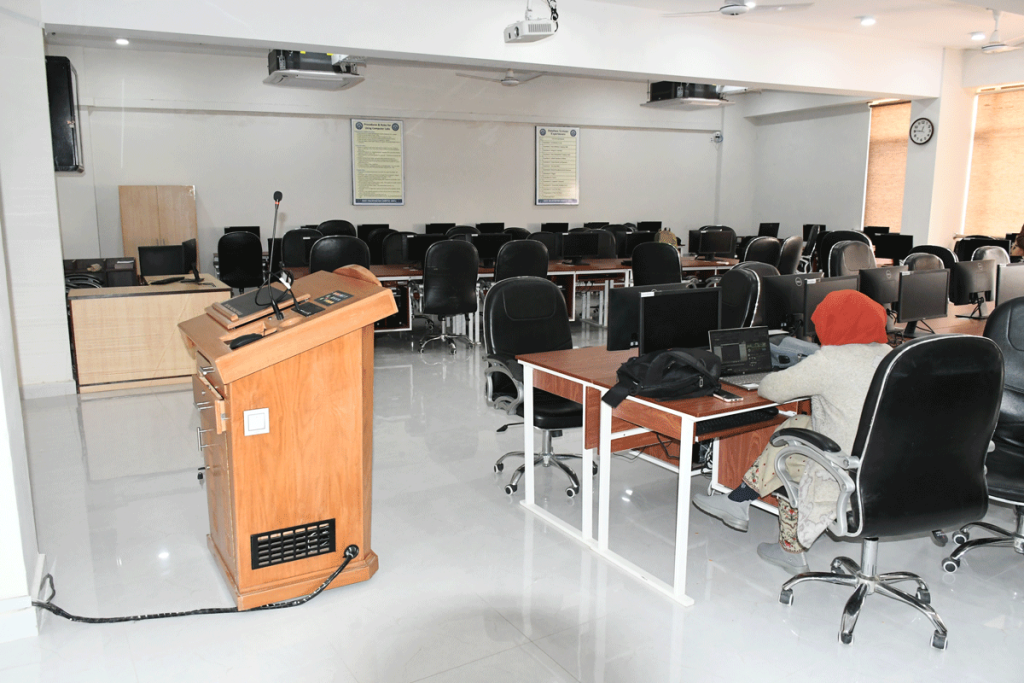
Lab Incharge
Rozi Khan
Lab Facilities
State-of-the-Art Workstations: The lab is equipped with modern Dell Optiplex 7080 PCs, ensuring reliability, performance, and compatibility with a wide range of development tools and frameworks.
High-Speed Storage: With a combination of SSD and HDD storage solutions, students benefit from fast data access speeds for program execution, while having ample space to store project files, datasets, and software libraries.
Abundant Memory: Each workstation is equipped with 16 GB of DDR4 RAM, providing ample memory resources for running multiple applications simultaneously and handling complex computational tasks efficiently.
Versatile Learning Environment: The lab caters to diverse educational needs, accommodating activities ranging from introductory programming exercises to advanced AI and ML projects.
Hands-On Experience: Students have access to a comprehensive suite of development tools, IDEs, and software libraries, enabling them to gain practical experience and proficiency in software development, mobile app creation, and data science.
Purpose of the Lab
The primary objective of the General Programming Lab is to serve as a versatile learning environment, fostering the development of practical skills and competencies in various domains of computer science and software engineering. Students have the opportunity to engage with industry-standard hardware and software tools, enabling them to gain proficiency in programming languages, software development methodologies, mobile application design, as well as advanced concepts in AI and ML.
APPLIED PHYSICS LAB

Lab Incharge
Saftdar Ali
Lab Facilities
Understanding Errors
Projectile Motion
Heat Engine
Ripple Tank System
Faraday’s Law
PasCar with mass
Dell OptiPlex 7060 PC
Core i7 8th Gen, 16GB RAM, 512GB SSD, 1TB HDD, Built-in Wi-Fi & Wireless
Software:
PASCO Capstone
Purpose of the Lab
The Applied Physics Lab in our Computer Science department offers hands-on learning and research opportunities in Computer Science. Equipped with advanced facilities, students explore material strength, structural behavior, and innovative solutions. Through practical experiments and software simulations, they develop essential skills for real-world challenges. Faculty mentorship fosters a dynamic learning environment, preparing students for successful careers in Computer Science.
FINAL YEAR DESIGN PROJECT LAB
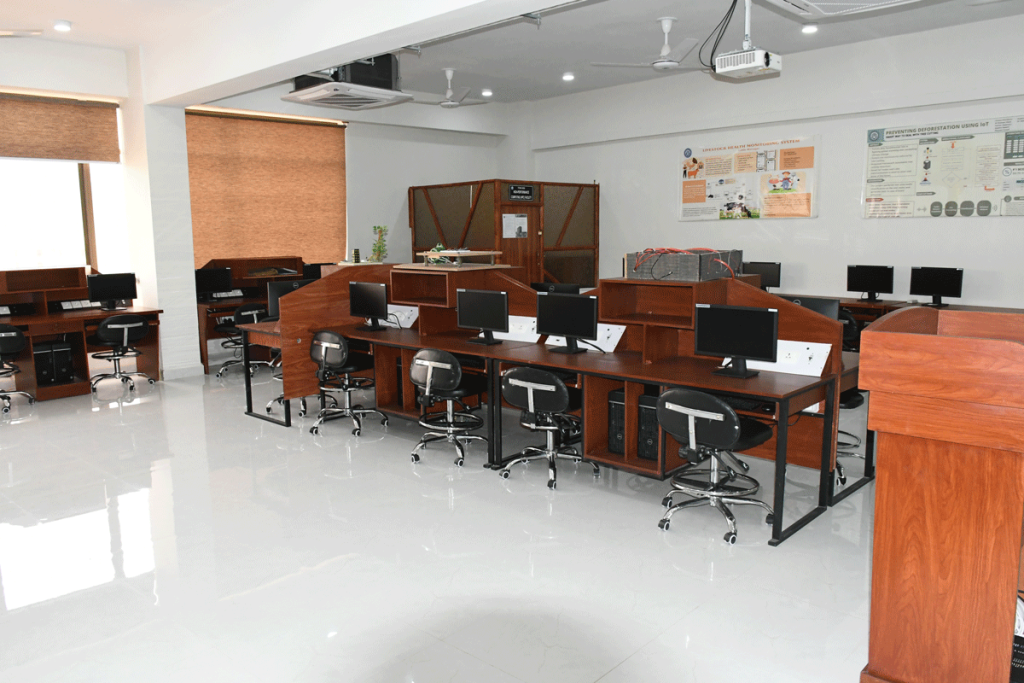
Lab Incharge
Rozi Khan
Lab Facilities
The Final Year Project Lab is a dedicated facility equipped with 30 high-performance PCs,
High-Performance Computing (HPC) Cluster: The Titan X650, a state-of-the-art HPC cluster, provides students with access to massive computational power for tackling complex simulations, data-intensive tasks, and parallel processing workloads.
Hardware Specifications:
Each workstation in the Final Year Project Lab boasts a robust hardware configuration, featuring:
Processor: Dell Optiplex 7080
Storage: 256 GB Solid State Drive (SSD) for rapid data access and 1 TB Hard Disk Drive (HDD) for ample storage capacity.
Memory: 16 GB DDR4 RAM for seamless multitasking and optimal application performance.
Purpose of the Lab
The primary objective of the Final Year Project Lab is to serve as a hub for creativity, innovation, and scholarly inquiry, enabling students to embark on ambitious projects that push the boundaries of knowledge and technology. With access to state-of-the-art hardware and software resources, students have the opportunity to conceptualize, develop, and showcase their projects in diverse fields, including software engineering, artificial intelligence, robotics, and more.
MULTI MEDIA AND GRAPHICS LAB
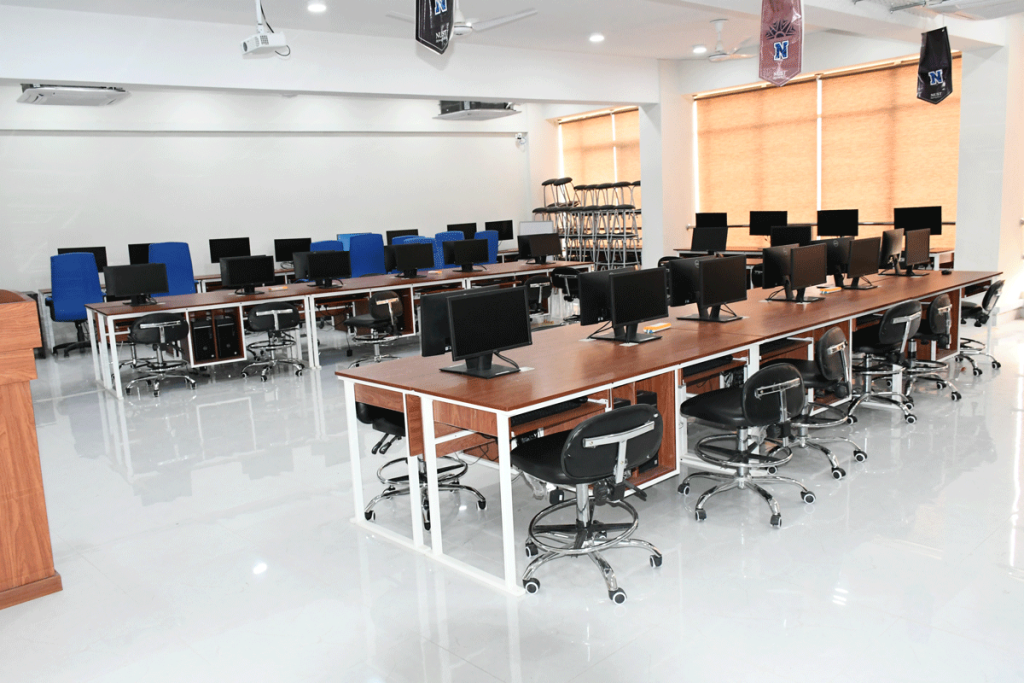
Lab Incharge
Bakht Muhammad
Lab Facilities
- 26 à Dell OptiPlex 7090 (19th LED, 32gb Ram, 4gb GPU, 512gb SSD)
- 14 à HP ELITEDESK 800 G6 TOWER (24th LED Built-in 512SSD 1TB HD, 32Ram, 8GB GC)
- 7 à Dell OptiPlex 7080 (19th LED, 16GB Ram, 512GB SSD, 1TB HD)
Software Installed: VScode, DevC++, MySQL, Scratch, Python, Code Blocker, Android Studio, Flutter
Purpose of the Lab
This lab is used for research purposes almost because we have such kind of powerful system that is required for research students. As we have a heavy specification system we are using the lab for Architecture Design (MATLAB), For Graphics, Like video editing software (Adobe After Effect, Adobe Premier Pro), and Other Tools for graphics, Photoshop, Illustrator, InDesign, etc.
DIGITAL LOGIC DESIGN LAB
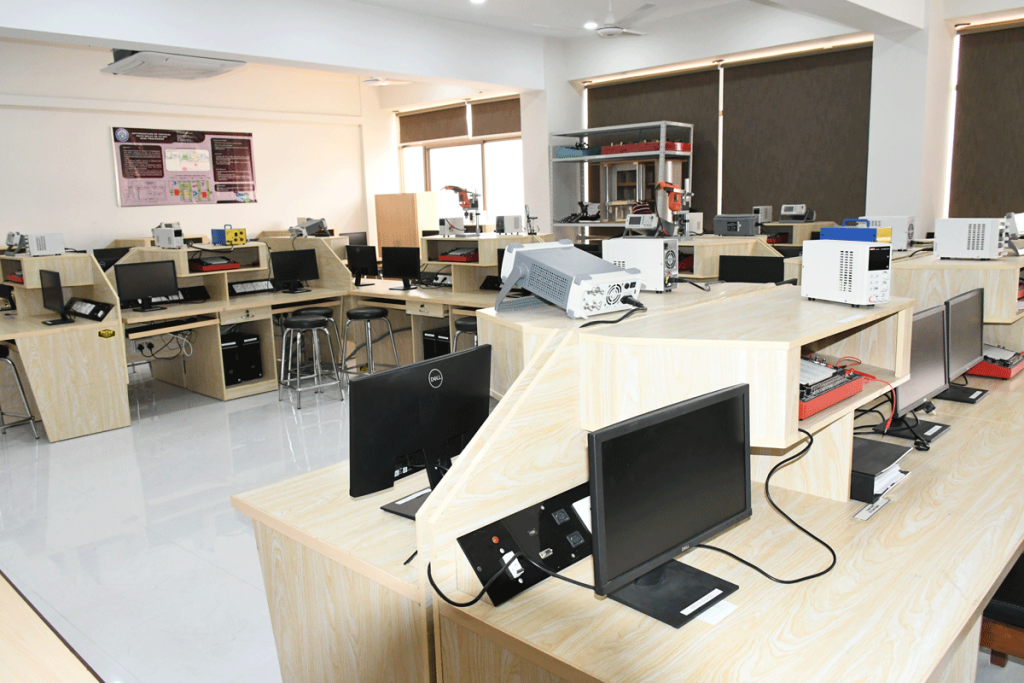
Lab Inchrge
Muhammad Abid Hussain
Lab Facilities
The facilities available in a Digital Logic Design (DLD) lab can vary depending on the institution, the level of education, and the specific focus of the lab. However, here are some common facilities and equipment that might be found in a DLD lab:
Computers: Typically equipped with necessary software for digital logic design such as simulation tools (ModelSim, Verilog/VHDL compilers), design tools (schematic capture, Proteus, and HDL editors), and programming environments (Arduino IDE compilers for embedded systems).
Development Boards: These might include FPGA (Field Programmable Gate Array) boards, CPLD (Complex Programmable Logic Device) boards, microcontroller development boards like Arduino, and Raspberry Pi, or specialized development kits from manufacturers like Xilinx.
Logic Gates ICs and Sensors: Various logic gates and integrated circuits for students to experiment with in building digital circuits. This could range from basic gates (AND, OR, NOT) to more complex components like flip-flops, multiplexers, decoders, registers, and Different types of Arduino and Raspberry Pi Sensors like (PIR, IR Ultrasonic sensors, etc.)
Measurement Instruments: Equipment such as oscilloscopes, logic analyzers, function generators, and multimeters for testing and debugging digital circuits.
Breadboards and Wiring Tools: Breadboards allow students to quickly prototype circuits without soldering, and wiring tools like jumper wires, connectors, and soldering irons may also be available for more permanent circuit construction.
Peripherals: Various input and output devices such as LEDs, switches, pushbuttons, keypads, displays (e.g., 7-segment displays, LCDs), sensors, and actuators to interface with digital circuits.
Simulation Software: Apart from real hardware, simulation software is essential for students to design and test circuits virtually before implementing them on physical hardware. This could include industry-standard tools like ModelSim, Proteus, or MATLAB/Simulink.
Purpose of the Lab
The purpose of a Digital Logic Design (DLD) lab is to provide students with practical hands-on experience in understanding, designing, implementing, and testing digital circuits. Here are some specific purposes of a DLD lab:
Reinforcing Theoretical Concepts: The lab allows students to reinforce theoretical concepts learned in lectures or textbooks by applying them in practical experiments and projects. This helps solidify their understanding of fundamental principles such as Boolean algebra, logic gates, sequential logic, and combinational logic.
Practical Skill Development: It provides students with the opportunity to develop practical skills in designing, building, and testing digital circuits using hardware components, simulation software, and development tools. This includes skills in circuit prototyping, troubleshooting, and debugging.
Fostering Creativity and Innovation: The lab encourages students to explore creative solutions to design problems and stimulates innovation in the development of digital systems. Students often work on projects that involve designing and implementing circuits for various applications, from basic logic gates to more complex systems like microprocessor-based control systems.
Preparation for Real-World Applications: By working with industry-standard tools and equipment, students gain practical experience that prepares them for careers in fields such as digital electronics, embedded systems, computer architecture, and integrated circuit design.
Hands-On Learning: Hands-on experimentation in the lab allows students to see the real-world behavior of digital circuits, understand the limitations of theoretical models, and gain insights into practical considerations such as signal integrity, timing analysis, and power consumption.
Project-Based Learning: DLD labs often incorporate project-based learning approaches where students work on open-ended design projects or practical applications of digital logic. This enables them to apply their knowledge to real-world problems and encourages independent thinking and creativity.

